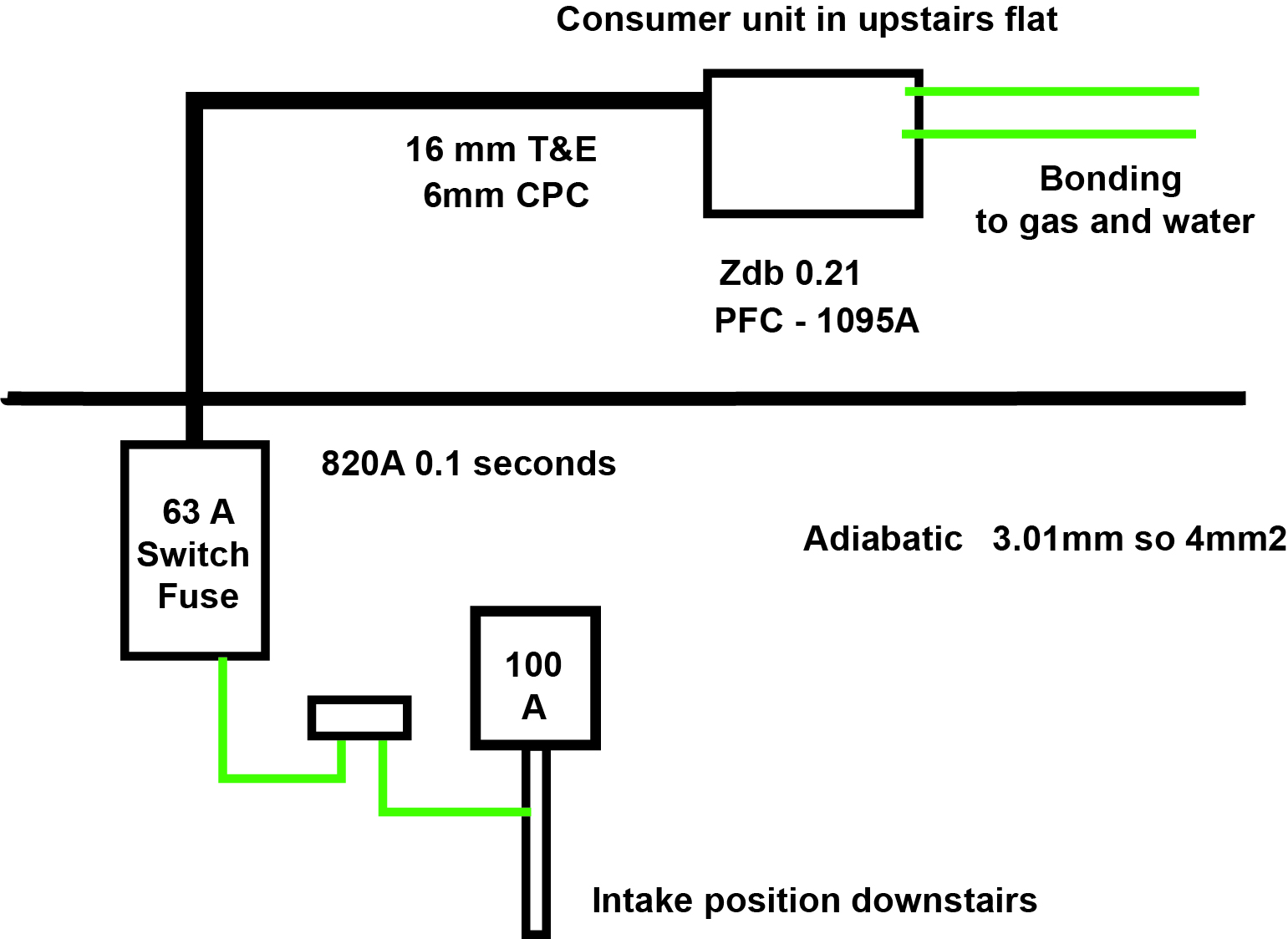If you have a TNCS supply coming into the property
In the down stairs meter cupboard you have a switch fuse protecting a 16mm2 T&E cable feeding a CU in an flat in the building.
I was just doing some Adiabatic sums on the 6mm2 CPC in the T&E ( Theoretical only, this is not a real example) to see if was a suitable size.
But then I started thinking about the MPB.
If the bonding in the flat is 10mm2, but that bonding has no connection back to the MET at the incoming position, apart from the 6mm2 cable, does that mean the sizing of CPC in the T&E is to small. Would I need at least a 10mm2 CPC back to the MET
WE have an equipotential zone in the flat, But does that need to come form the MET, and not the earth bar in the CU
Its OK an as far as the adiabatic, but would it fail on being to small for the MPB.
Thanks..
In the down stairs meter cupboard you have a switch fuse protecting a 16mm2 T&E cable feeding a CU in an flat in the building.
I was just doing some Adiabatic sums on the 6mm2 CPC in the T&E ( Theoretical only, this is not a real example) to see if was a suitable size.
But then I started thinking about the MPB.
If the bonding in the flat is 10mm2, but that bonding has no connection back to the MET at the incoming position, apart from the 6mm2 cable, does that mean the sizing of CPC in the T&E is to small. Would I need at least a 10mm2 CPC back to the MET
WE have an equipotential zone in the flat, But does that need to come form the MET, and not the earth bar in the CU
Its OK an as far as the adiabatic, but would it fail on being to small for the MPB.
Thanks..


